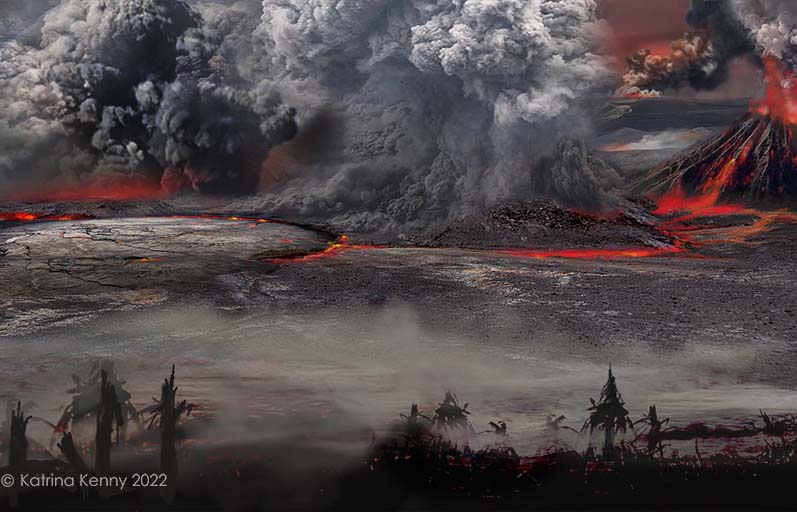New research out of the University of New England (UNE) has revealed a series of super volcanic eruptions that occurred in Northern NSW more than 252 million years ago likely triggered the largest mass extinction ever seen on Earth.
Until now, the cause of the significant global warming that set off this period of ‘Great Dying’ was relatively unknown to scientists, however, UNE post-doctoral fellow Dr Timothy Chapman, geologist Dr Luke Milan, and a team of international researchers believe they’ve found the answer after studying a number of ancient volcanic remnants scattered across the New England region of NSW.
“We’ve found these remnants, otherwise known as calderas, to represent some of the largest eruptions observed globally,” says lead researcher Dr Chapman.
“These violent eruptions would have reached the stratosphere and the subsequent fall-out of volcanic ash would have blanketed most of eastern Australia”.
Dr Chapman says minimum estimates suggest at least 150,000 kilometres cubed of material was exploded, making it a similar scale to that of the super eruption of Yellowstone which covered the majority of the United States in ash.
“To put this into perspective, the eruption that obliterated the city of Pompei was just three to four kilometres cubed of pyroclastic rock and ash, while the Mt St Helens eruption in the US in 1980 was about one kilometer cubed,” says Dr Chapman.
Our work shows the eruption in Australia is thought to be a big contributor to this initial warming and species die-off, and provides insights into the consequences of catastrophic global warming, brought about by extreme volcanic activity.
To help establish the size and age of the volcanoes, the team used high precision instruments from Boise, Idaho, to examine tiny crystals of zircon, which is a mineral found in volcanic rock and is a helpful timekeeper for geologists.
Through this, Dr Milan says they were able to determine that the New England calderas are between 252 to 257 million years old.
“This is significant, because around this time, approximately 85 to 95 percent of all species became extinct,” he says.
“What is interesting is that the peak of the eruptions in eastern Australia came before the ultimate extinction event. We also know the global climate was changing before this event, weakening the planet’s ecosystems, but scientists weren’t sure what was causing that”.
The cause of this has until now, been mostly attributed to a volcanic eruption in the modern-day Siberia, which at the time, was near the North Pole. However, Dr Chapman says this alone can’t explain the significant rise in global temperatures at the time.
“Across the world the temperatures were rising, and species were dying well before the volcanism in Siberia," he says.
“Our work shows the eruption in Australia is thought to be a big contributor to this initial warming and species die-off, and provides insights into the consequences of catastrophic global warming, brought about by extreme volcanic activity.”
Read the full paper, published in Nature Geoscience, here.


